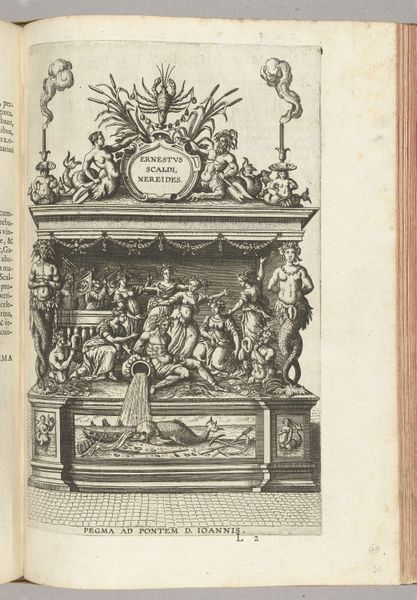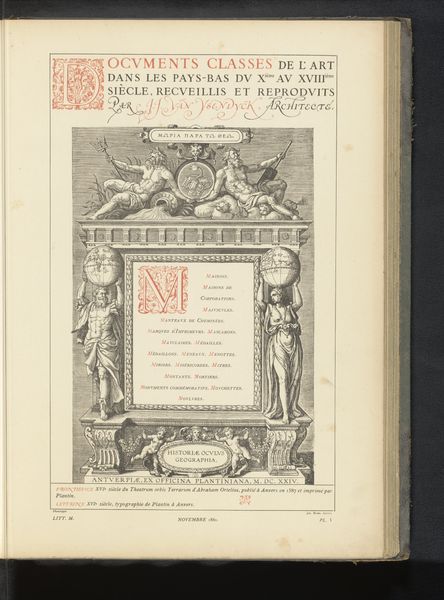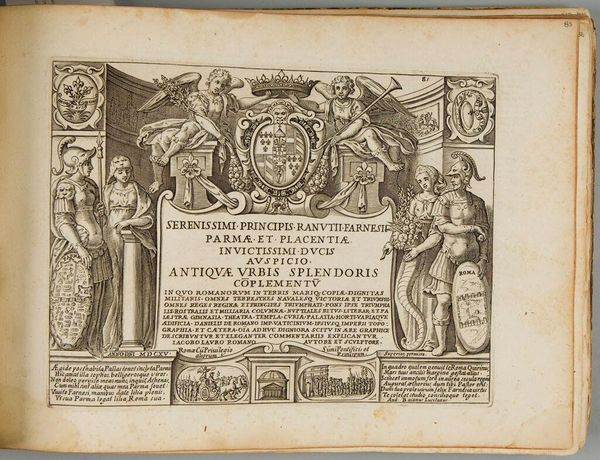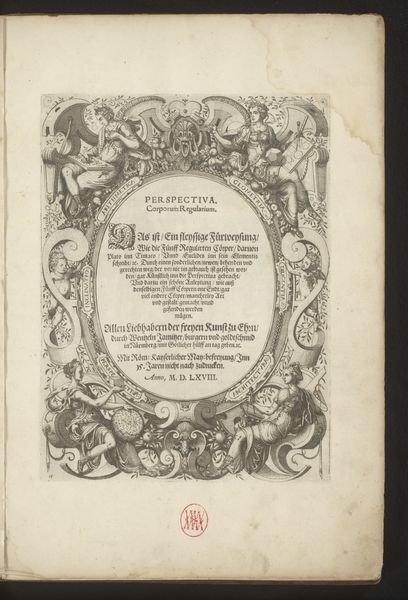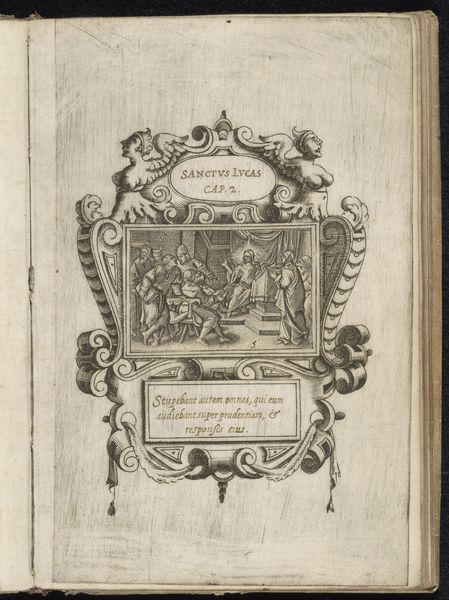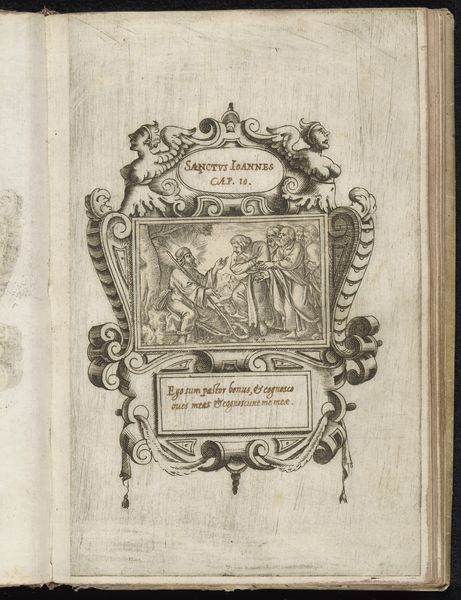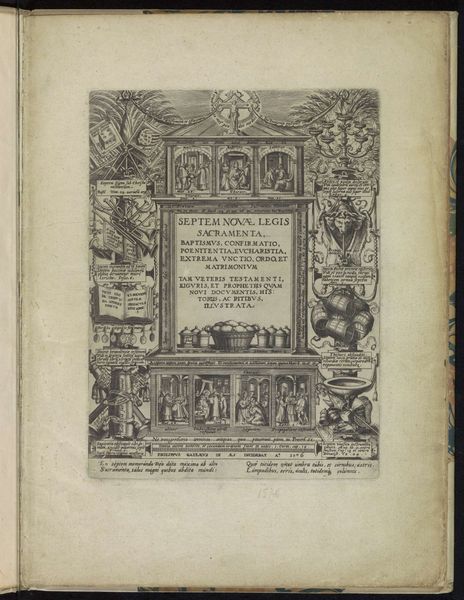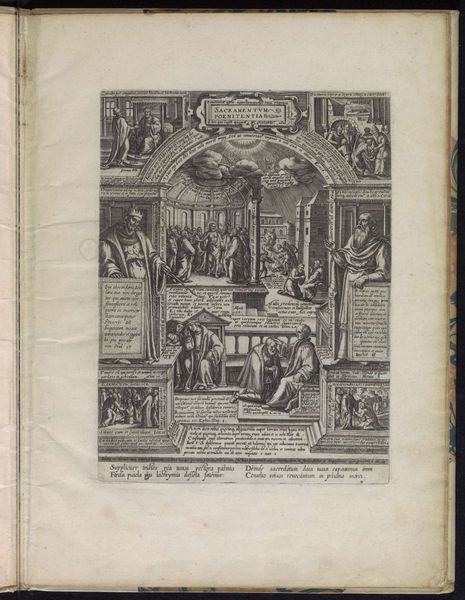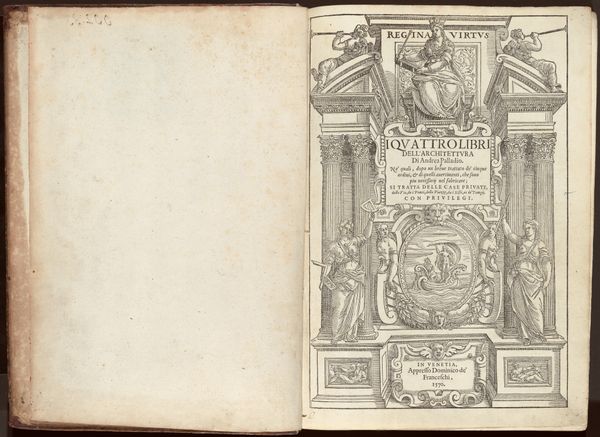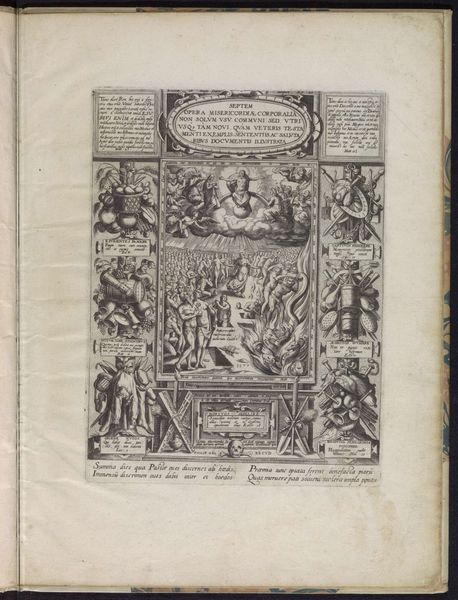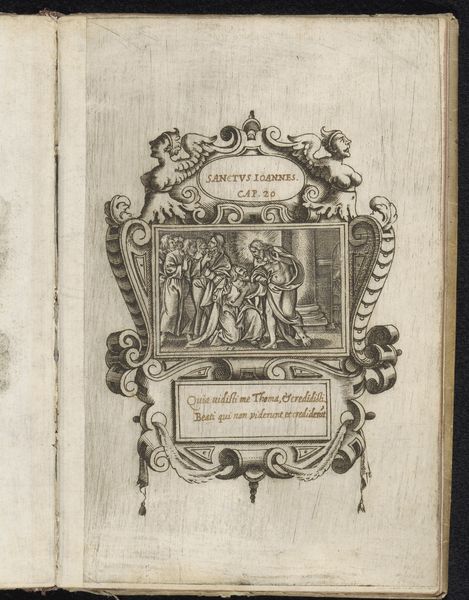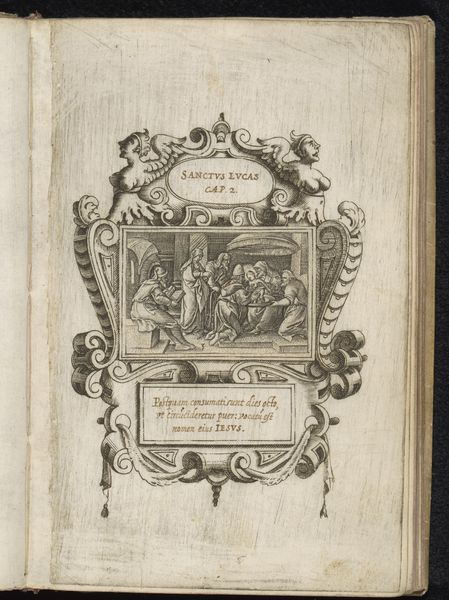
Tweede titelprent voor de beschrijving van de intocht van aartshertog Ernst als gouverneur der Nederlanden te Antwerpen, 1594 1594 - 1595
0:00
0:00
print, engraving
#
baroque
# print
#
figuration
#
history-painting
#
engraving
Dimensions: height 328 mm, width 210 mm
Copyright: Rijks Museum: Open Domain
Editor: This engraving, "Tweede titelprent voor de beschrijving van de intocht van aartshertog Ernst als gouverneur der Nederlanden te Antwerpen, 1594," created by Pieter van der Borcht the Elder around 1594 or 1595, feels intensely celebratory but also imposing, like a declaration of power. What deeper layers do you see in this print? Curator: Well, let’s consider what this image *is*: it’s the title page to a book documenting a political procession, celebrating Archduke Ernest’s arrival as governor. It’s an object designed to legitimize power. Think about how the artist employs classical allegory - the figures, the columns, the Roman font - to link the Habsburgs with the grandeur of the Roman Empire. How does that association influence perceptions of authority? Editor: So, it’s not just documenting an event, but actively constructing an image of power through symbolism. Those globes the cherubs are struggling to hold…do they symbolize anything? Curator: Exactly! Those globes could signify Habsburg dominance over the world, or their claim to universal rule, further enhanced by the double-headed eagle above. Consider how these symbols would have been received by the people of Antwerp, who were under Habsburg rule. Do you think they uniformly embraced this depiction of power? What about dissenting voices or communities? Editor: I hadn't thought about that - it seems naive to think it was universally celebrated. There must have been those who questioned their authority or felt excluded from this display. It puts the celebratory tone into question. Curator: Precisely. Art like this wasn't simply a reflection of its time; it actively shaped perceptions, fueled political agendas, and potentially ignited resistance. It invites us to think critically about whose stories are being told and whose are being silenced. Editor: It's amazing how a seemingly straightforward historical document like this can open up so many avenues for considering power dynamics and social tensions. Curator: Indeed. By unpacking the layers of symbolism and considering the social context, we can see how art functioned as a tool in shaping political realities and social identities.
Comments
No comments
Be the first to comment and join the conversation on the ultimate creative platform.
